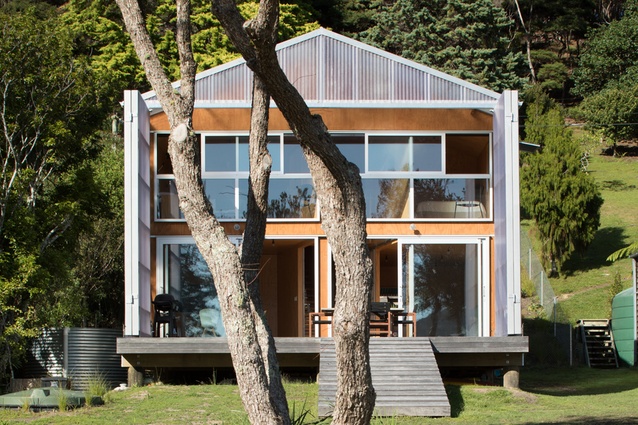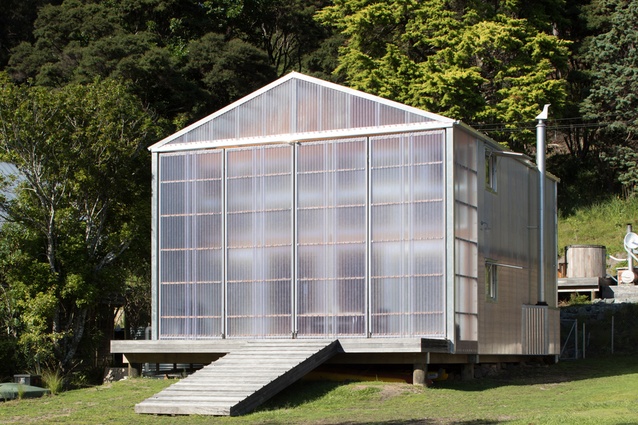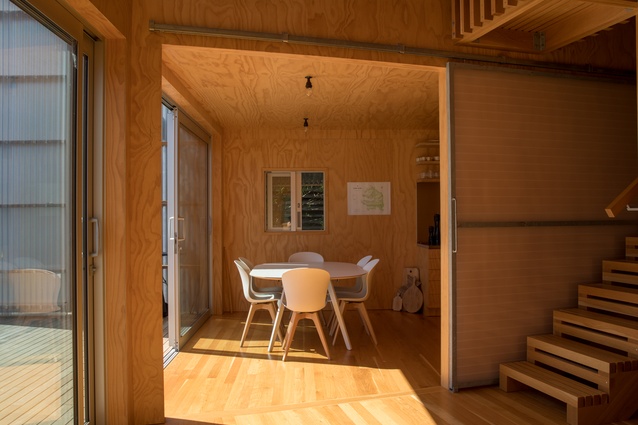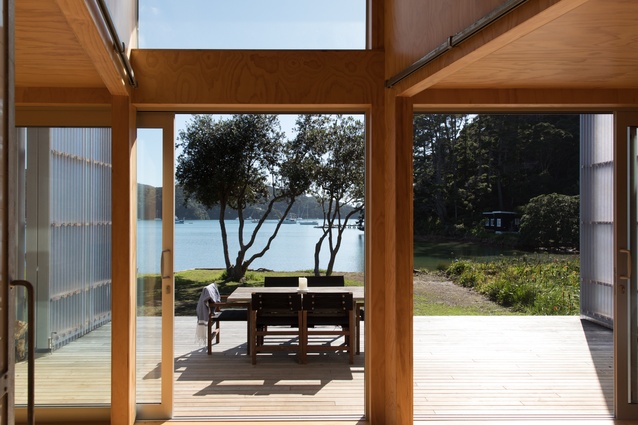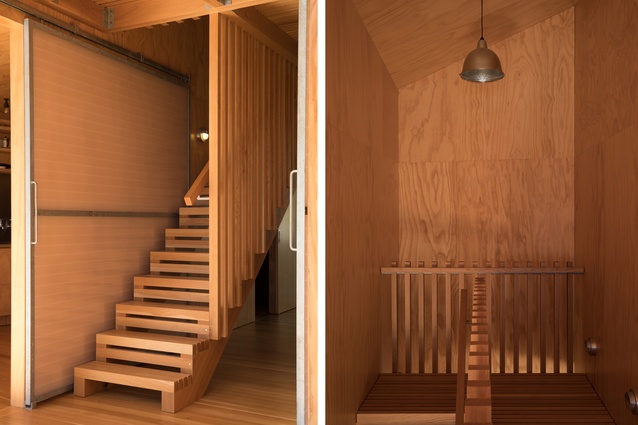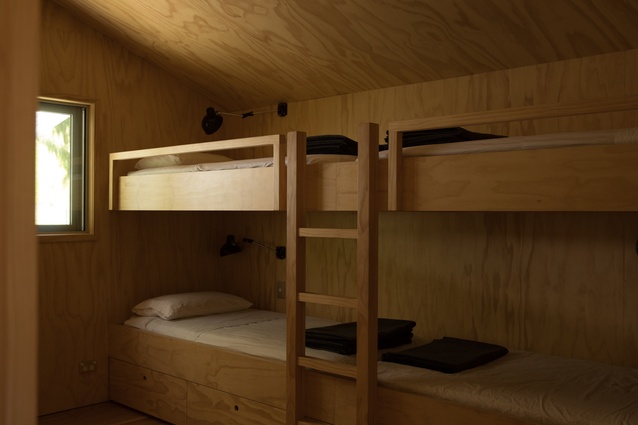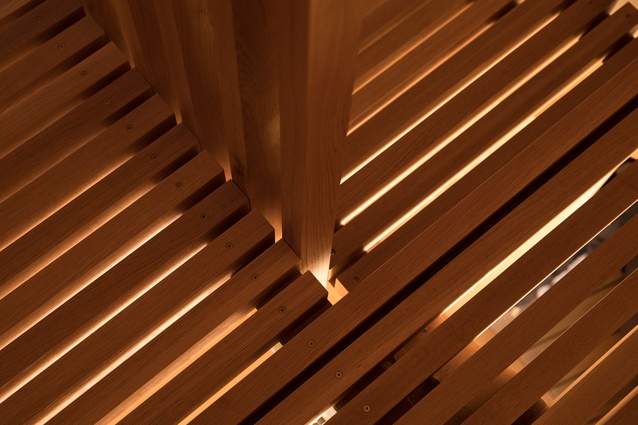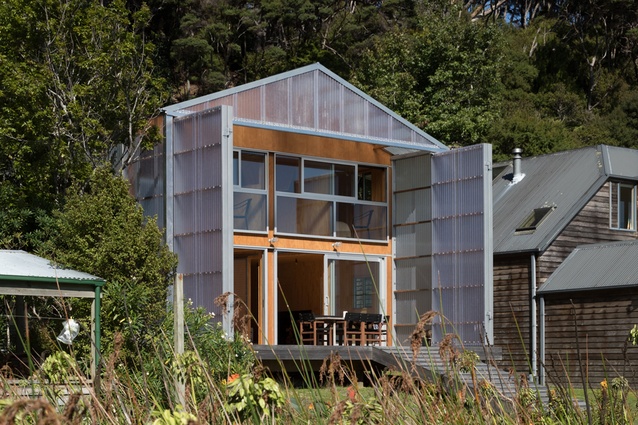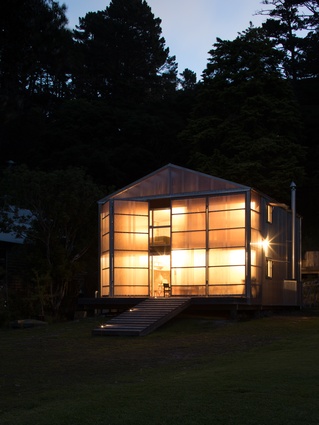Boat shed on the bay
A pared-back, utilitarian bach on Kawau Island by Crosson Architects draws on the quintessential shed typology for its inspiration.
Architect Sam Caradus remembers his client’s brief as if it were yesterday: “Hey, we’ve got this really groovy spot on Kawau Island and we really like the idea of doing something which is kind of small, efficient and possibly a little bit whimsical, and has some of the joy of your Hut on Sleds.”
The pair had just emerged from a weekly morning swim and were sitting on a rock wall overlooking Kohimarama Beach. What began on that day back in 2014 was to become a five-year journey, which Caradus likens to a pop song. “It’s not something that, in our mind, you should get in the very first moment you hear it,” he explains. “It’s a piece of music that you have to listen to a number of times in order to understand or appreciate or feel the interesting nuances and the delight.”
This was certainly true of this project, with the client being given time to reflect and consider and come back at each stage of the design process, ready to engage in the next phase, confident and happy with where things were at. Added to that was the time associated with building on an island, which required a great deal of coordination. “While the initial hope was that a contractor would live on site and a team of builders would rent on the island, what ended up happening was that the contractor and his team and all the sub-trades caught the ferry over every morning and back at night,” says Caradus.
Fundamentally, the ‘big idea’ around the house was that it would be utilitarian in nature, like a boat shed sitting on a jetty. Its gable form sits atop an eight-by-eight-metre grid, with a corridor that runs asymmetrically to the ridge of the roof, carrying through the interior and popping out the other side of the house.
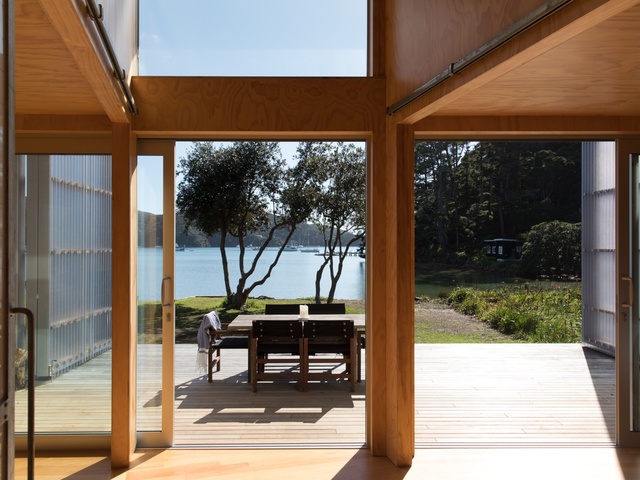
The initial design featured an external, open corridor, linking the entry ramp through to the back of the house, with, effectively, a building either side. But, in a following iteration, it became enclosed and then, at a further point, a verandah was added at the front for an extra layer of protection and shade.
While the corridor’s placement at an asymmetrical angle may seem an unusual move, Caradus says it’s a result of the joy of designing. “Every project is a unique realisation of a number of inputs – what the client needs or wants on the site or within the project, and the actual site itself. In this case, the site was narrow and long, and when you put all the overlays into it, like the setbacks and the envelopes, you look at the aspect – the orientation to the sun and the wind, and those kinds of things. And only then will a plan reveal itself.”
The reality is that if anyone else were given those inputs, they would most likely have realised them in a very different way; this is why Caradus’ vision here is so integral to the curious, delightful outcome of the plan.
On the ground floor are the kitchen, the dining and living rooms, and a small bathroom, with the corridor “rocking across” the floor plan, which is, in essence, reflected upstairs, with an elegant handcrafted stair leading to the landing.

A number of explorations into the stair and landing’s materiality were made before arriving at the slatted, elevated design, which allows the spaces above and below almost to permeate through. “Throughout, there was this drive to create something that was perfectly practical, kind of elemental and simplistic, but really beautiful,” explains Caradus, who worked on the stair with director Ken Crosson.
Upstairs is a bunk room and a smaller guest room, with the master bedroom and en suite across the corridor.
The bach’s corrugated aluminium sheet cladding (a substitute for corrugated iron, which would have been subject to rust on the coastal site) is designed to reference the quintessential shed aesthetic and the four-metre-high, translucent polycarbonate-clad doors which frame the deck have the same corrugated profile.

From a pragmatic point of view, these oversized doors offer shade and protection from the summer sun and privacy from the neighbours when they are folded back but it is the magic they create by night, when they are closed, which is so special. “When the bach is lit from the inside, you get this sort of lantern effect, like a ship’s beacon,” says Caradus. “The translucent material has this softness and evocativeness, where you can see someone behind it, like shadow play, but you can’t necessarily make out who they are or what they are doing.”
As with all Crosson Architects’ projects, the bach makes the most of the opportunities that the site has provided, in terms of capturing as much sun as possible for naturally accessible heat and light. Rainwater is collected off the roof and robust, ethically sourced materials have been used throughout.
What Caradus and the team have created here is a beautiful, intimate, meaningful house for the owners and their family, with an overarching rigour around efficiencies of construction, materials and space – the serendipitous result of a post-swim catch-up on an Auckland beach.

